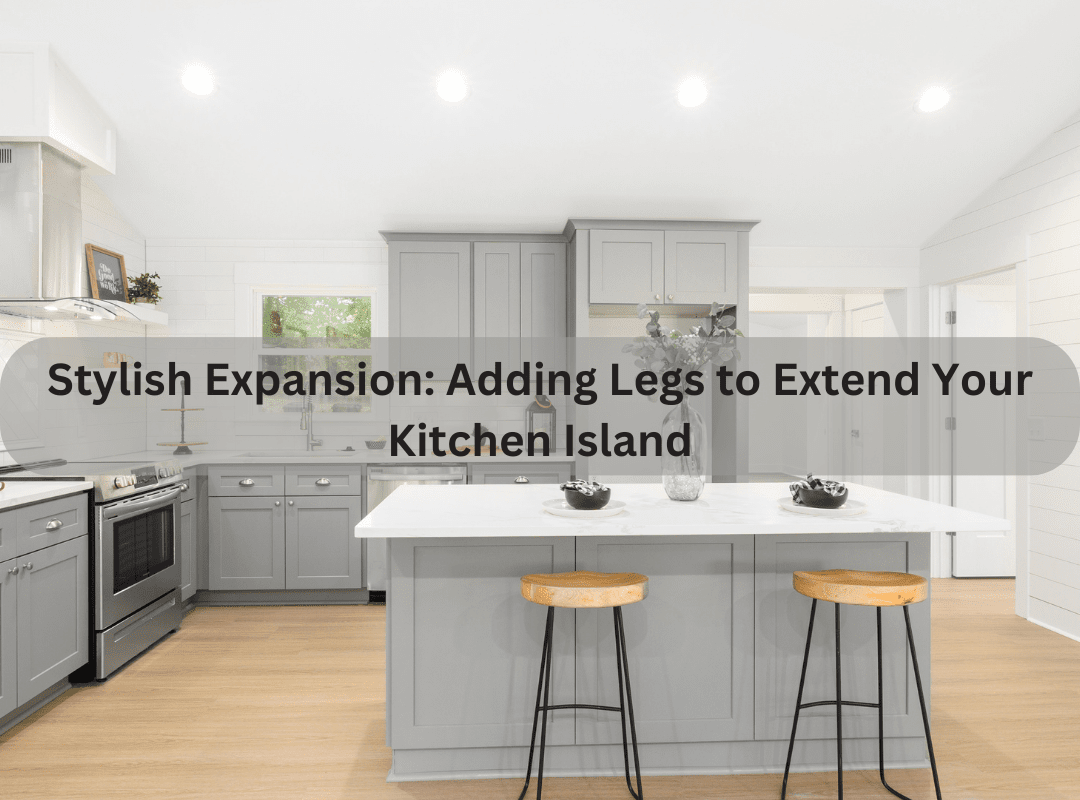Introduction For How To Extend Kitchen Island With Legs
In the dynamic realm of kitchen design, the desire for additional space often leads homeowners to explore innovative solutions. If you find yourself yearning for more counter space, seating, or simply a unique aesthetic touch, extending your kitchen island with legs is a versatile and stylish option.
This DIY project not only adds practical functionality but also allows you to infuse your kitchen with a personalized touch. In this guide, we embark on a journey of creativity, offering insights on how to seamlessly extend your kitchen island with legs, creating a space that goes beyond utility to become a statement of your culinary style.
Q1: Can I extend my kitchen island with legs?
A1: Yes, it’s possible to extend a kitchen island using legs for additional support.
Q2: What are the benefits of extending a kitchen island with legs?
A2: Extending with legs provides extra counter space, seating options, and an opportunity to customize the island’s size.
Q3: How do I choose the right type of legs for extending my kitchen island?
A3: Consider legs that match the existing style and material of your kitchen island, ensuring a cohesive look.
Q4: Can I use pre-made legs for extending the kitchen island?
A4: Yes, pre-made legs are available in various styles and materials, offering a convenient option for extension.
Q5: Are there adjustable legs suitable for extending a kitchen island?
A5: Yes, adjustable legs provide flexibility in height and are suitable for leveling the extended island.
Q6: What tools are required for extending a kitchen island with legs?
A6: Tools may include a saw, drill, screws, and a level for attaching and securing the legs.
Q7: Is it necessary to match the new legs to the existing finish of the kitchen island?
A7: While not mandatory, matching the finish creates a seamless look; however, contrasting legs can also add a stylish touch.
Q8: How do I ensure stability when extending a kitchen island with legs?
A8: Properly measuring and leveling the legs during installation ensures stability and prevents wobbling.
Q9: Can I extend a kitchen island with decorative or ornate legs?
A9: Yes, decorative legs can enhance the aesthetic appeal of the extended island, adding a unique design element.
Q10: Is professional assistance necessary for extending a kitchen island with legs?
A10: While it’s a DIY-friendly project, consulting with a professional for structural considerations may be advisable.
Q11: What materials can be used for the legs when extending a kitchen island?
A11: Common materials include wood, metal, or a combination, depending on the desired aesthetic and structural requirements.
Q12: How do I ensure the extended portion blends seamlessly with the existing island?
A12: Match the countertop material and finish of the extended portion to create a cohesive and integrated look.
Q13: Can I use the extended portion for additional storage?
A13: Yes, consider incorporating storage solutions such as drawers or shelves into the extended part of the island.
Q14: How much overhang can I have on the extended portion for seating?
A14: Aim for a recommended overhang of around 12 inches for comfortable seating at the extended portion of the island.
Q15: Can I add electrical outlets to the extended part of the kitchen island?
A15: Yes, consult with a professional to safely incorporate electrical outlets if needed for appliances or charging stations.
Q16: Are there building code considerations when extending a kitchen island with legs?
A16: Check local building codes to ensure compliance, especially if altering the structural aspects of the kitchen island.
Q17: Can I extend a movable kitchen island with legs?
A17: Yes, for movable islands, consider attaching wheels or casters to the extended portion for easy mobility.
Q18: How do I finish the exposed sides of the extended portion for a polished look?
A18: Use matching panels or decorative finishes to cover exposed sides, creating a cohesive appearance.
Q19: Can I add a sink or cooktop to the extended part of the kitchen island?
A19: It’s possible, but consult with a professional to ensure proper plumbing and electrical considerations for such additions.
Q20: Is it recommended to seal or finish the legs for protection and durability?
A20: Yes, applying a protective finish or sealant to the legs helps safeguard against wear and enhances durability over time.
Conclusion On How To Extend Kitchen Island With Legs
As we conclude this journey into the world of extending a kitchen island with legs, envision the transformation – an island that not only meets your functional needs but stands as a testament to your design sensibilities. The addition of legs brings not just stability but also an opportunity to infuse character into your culinary space.
Whether you choose pre-made legs for convenience or embark on crafting a unique design, the extended island becomes more than a surface; it becomes a reflection of your taste and the heartbeat of your kitchen. Here’s to the fusion of form and function, where every meal prepared and shared is accompanied by the beauty and practicality of your extended kitchen island.




